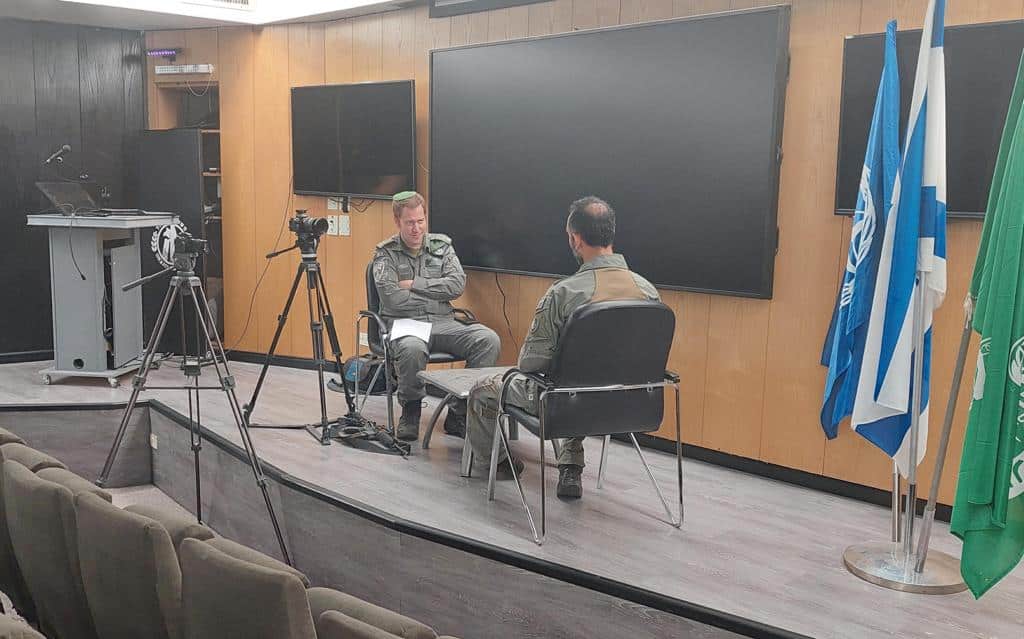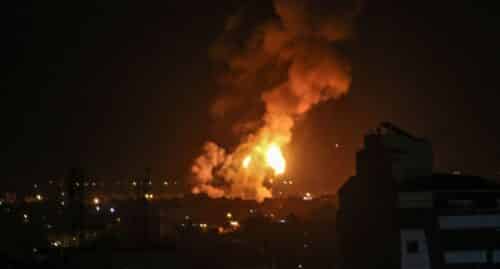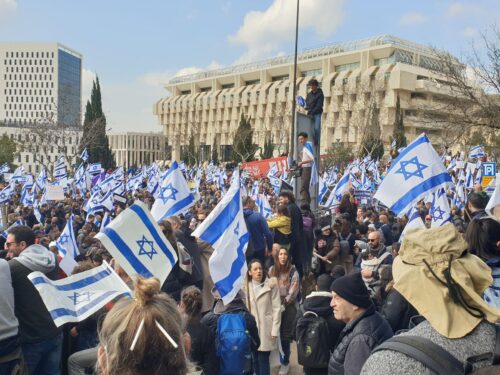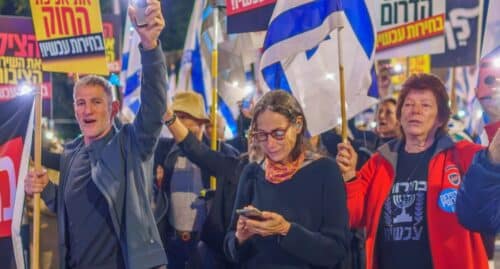The events of October 7 unfolded in complete chaos. Hundreds of breaches in the border fence, dozens of battle arenas, thousands of encounters with terrorists – in a mixture of civilians, IDF soldiers, and Hamas terrorists – some disguised as IDF soldiers. Luckily, thanks to the resourcefulness of the soldiers and the courageousness of Israeli civilians, the event was eventually contained, preventing an escalation to an even more calamitous affair. It behooves us to try and make sense of the events of the fatal day.
That is exactly what Superintendent Dr. Tal Misgav does.
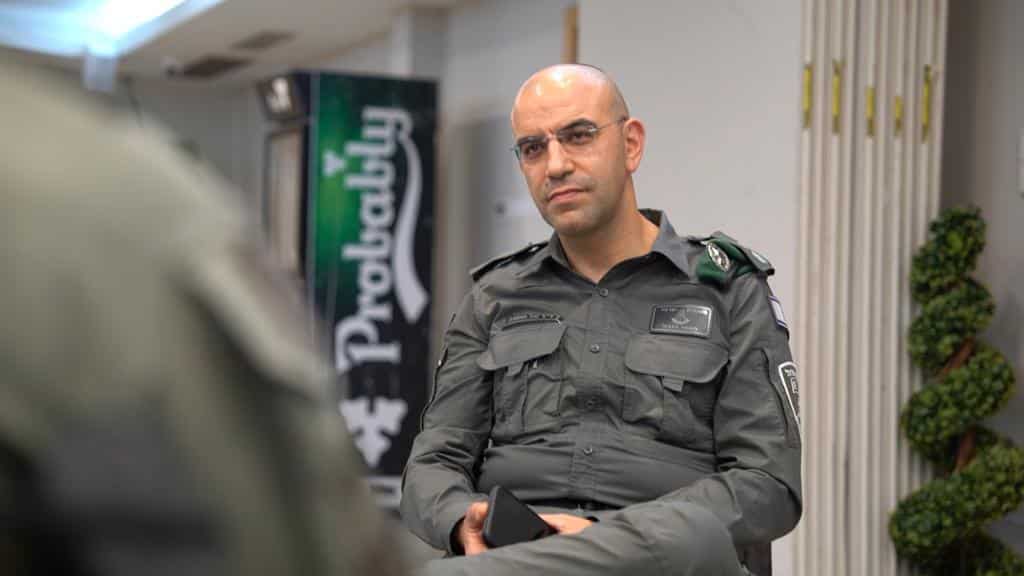
“Collection and documentation are our combat routine”
Superintendent Dr. Tal Misgav is Head of the History Department at the Israel Border Police, Director of the Border Police museum and heritage center, a researcher at the IDF History and Research department, and an expert in modern military history. At the onset of the attack on October 7, as the military police fighters were dispatched to the fighting, he put the history and research unit to work.
“On October 7, already at seven o’clock in the morning, I called in the entire [history] unit”, Dr. Misgave recounts, “both the history war room and our reserves unit. This is a professional unit comprise of highly experienced people, most with advanced academic degrees. They immediately set out to collect historically significant evidence. We listen to recordings of radio communications, we audit staff meetings and sessions, and witness situation assessment in all decision-making junctures. We listen to multiple battle arenas and document everything in real time, including our impression of the decision-making process. This is actually our combat routine. We ceaselessly document history in the making.”
Do you interview soldiers in the battlefield?
“Of course. We’re everywhere, even deep in the field. Some interviews are even conducted under artillery fire. We physically get to the units, wherever they might be; go from one fighter to the next, interview and document them, with the aim of painting a bird’s eye picture of the events, on the level of the entire corps. If I hold off until the fighters can come to tell me their stories, it can take months, but it is imperative to get the first-hand testimonies as close as possible to the time of the events. Anyone else telling their story would offer only a second, even third hand testimony, or more. For this reason, we get to all the military bases – including top secret bases, with a documentation team, and cameras and recording equipment.”

How about those who were wounded in action and are not in the battle field currently?
“We get to the wounded as well, be they in the hospitals or at home. The soldiers’ cooperation is significant and very touching. They are familiar with our unit; we’ve been accompanying them for years, also in times of quiet – we don’t come at them out of leftfield, and they actually wait in anticipation to give us their account of what happened. In many cases – we are the first to hear their stories. Many of them are very moved and sometimes we see tears of pain that bursts out in front of us. We always offer them a hug and sometimes find ourselves crying along with them.”
How do you deal with cases in which there are multiple versions of the same event?
“You don’t create a battle picture in a day. As time goes by, we complete the overall puzzle. For example, we documented the events that transpired in one of the intersections on the road; we interviewed fighters who arrived at the battle arena from different sides of the road, each seeing a battle picture of their own, without knowing that additional Border Police forces were there hours or minutes before. On October 7, there was heavy fog of war. That’s why I try to conduct most interviews myself and we put an immense effort into this, in all hours of the day, just to get to an account while it’s still fresh in their minds. I imagine that over the next year we’ll be getting a fuller picture of the operations of the security forces and civilians; perhaps there will also be things we will never know, such as the stories of the hundreds of casualties we found in the field.”
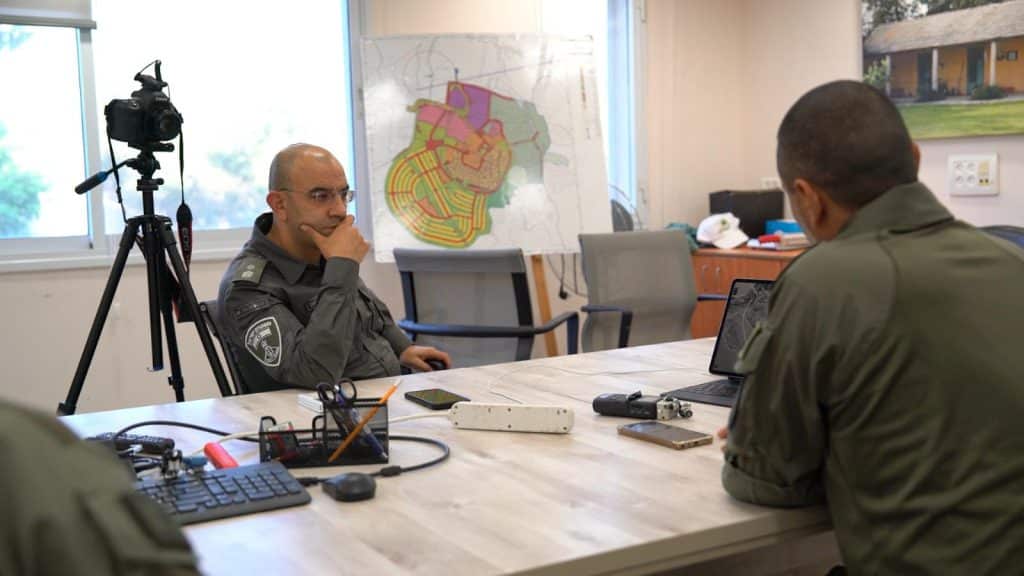
Is your motivation driven by the desire to document or rather by ideology?
“They are not mutually exclusive. The documentation is for research purposes but we fully understand that we are at a historic juncture in time – one of the most momentous in Israel’s history, and it is our responsibility to relay this story to future generations, for decades to come. I’m a child of the winter of 73 – I grew up with the stories of the Yom Kippur war, and we, who grew up with these stories, must tell the story of what happened now – for the sake of the hundreds who were savagely murdered; for the bereaved families that will carry this pain for decades; for the fighters, the wounded and the hostages; for the civilized world so it may realize with what kind of animals we have to deal; and for the country, that must look to the future and settle its internal disputes and fight back.”
The “iPhone generation” eliminates 450 terrorists
Misgav is extremely proud of the Border Police corps and its fighters for the extraordinary acts of heroism he witnessed in his work. “Apparently over 450 terrorists were eliminated by Border Police fighters”, he says.
Did the fighters’ heroism surprise you?
“I think that this generation of fighters, dubbed as the ‘iPhone Generation’, has proven that when it’s their time to step up – they deliver. There were fighters who put their own lives on the line to save others. Some were pulled out of bed – summoned to duty; some of them are traffic officers or court bailiffs, and some came all the way from up north to help with the fighting.”
What about the female Military Police fighters?
“Everything I said is true for male and female fighters equally. The Israeli Border Police was the first to incorporate female fighters in its combat ranks, and if anyone had any doubts until now – these women have proven themselves beyond any shred of a doubt. They were always equal among equals and an inseparable part of the force, and they took part in the events, fighting with extraordinary valor, did their job with exceptional heroism.”
And in this mayhem, are you starting to make heads and tails of the events?
“The first two or three hours were obscured by fog of war. Soldiers were getting WhatsApp messages from friends or relatives begging to be rescued from terrorists they’ve encountered. People left their homes, still wearing their synagogue clothes, with their personal firearms. The general impression was that they are going into dangerous battlegrounds and they ran straight into the horrors with single minded determination, while seeing their friends die around them, their vehicles getting hit by RPG grenades, extracting the wounded and returning into the inferno to do it all over again.”
In fact, every fighter has his or her own story, how are you supposed to build a picture out of them all?
“It’s one big story made up of hundreds of stories. In all my years as a historian, I’ve never seen something like it, and I am familiar with all of Israel’s wars. This is not just because of the sheer magnitude of the civilian carnage, but also because in those first fatal hours, people were literally fighting to defend their homes, fighting for their friends. I truly hope that I can find the words to express this and live up to the responsibility placed on my shoulders.”
Searching among the bodies of dead soldiers
As part of his responsibility, Dr. Segev interviews not only the fighters but also the Israel Border Police social service and human resources personnel, who immediately arrived at the hospitals to identify the casualties and support the wounded. “One female Border Police officer I interviewed, Osnat Doron, found herself at the Barzilai Medical Center already in the first hour of the attack, when total chaos reigned, tasked with the intake of the wounded soldiers from Border Police forces and report back to the Unit’s casualty officer. She recounted how she helped the wounded speak with their worried family members, and how she witnessed the endless wounded and dead – some unidentifiable, and spoke of the mental and emotional strengths she needed but was not trained for. She searched among the bodies of the dead soldiers, and was able to identify many of them.”
Additional contributors mentioned by Dr. Misgave were the rabbis: “Our unit’s rabbis worked day and night together with Israeli Police forensics people at the Shura forensics pathology center, to which hundreds of bodies of police, military and civilian casualties flowed. I personally couldn’t stomach the descriptions, but even if I never publicize these testimonies, it’s important for me to try and document the extraordinary job they’ve done. These are things that the mind cannot grasp.”
Do you believe that the border police corps has been forever changed?
“In no uncertain terms. This corps is going to significantly upscale its strength and power. This is actually underway as we speak – the number of companies has increased and the SWAT and tactical brigades have also grown – and it will continue to grow further as part of the establishment of the National Guard. Already it’s the most sought-after unit, ranking first among the IDF’s new recruits. For every opening there are 10-12 candidates, and among female fighters – more than 20 candidates for every opening. I am sure that after the war, the unit’s legacy and pride will grow and strengthen significantly.”
